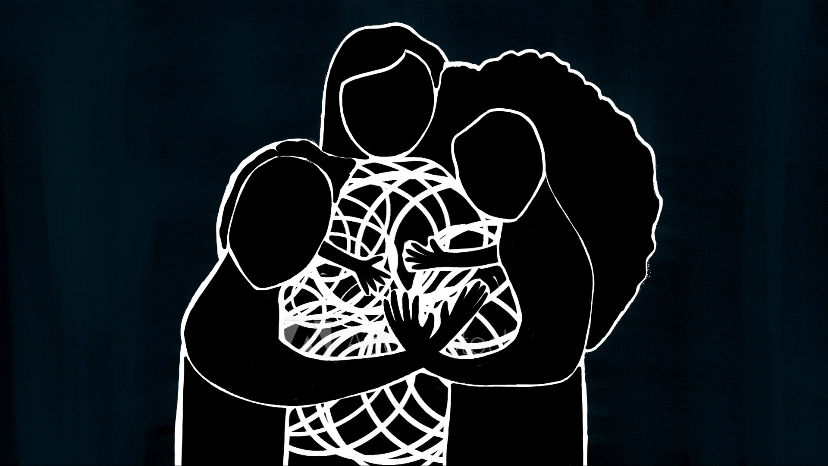Community Compassion Starts at School
#Leadership

|
Erin Werra Edtech Thought Leader |

|

|

|
 |
Grief can build outward to uplift people.
In the wake of a tragedy, such as the loss of a student or staff member, the ripple effects of a grieving classroom echo into neighborhoods. Staff who commute carry it homeward. Educators continue their important work of teaching and learning while juggling both their personal grief and the behavior students exhibit as they try to make sense of big feelings.
So when asked if it’s a school district leader’s responsibility to reach out and address grief following a tragedy with students or school staff, Superintendent Cory Hirsbrunner, EdD, emphatically agrees—it is not only a responsibility, but an instinct.
“Our job doesn’t end at the end of the school day; our job is 24/7,” Dr. Hirsbrunner said. “Whatever we can do to best support students as well as families, that’s going to help students get to a place where they’re feeling good about themselves, coming to school, and learning.”
Grief is not linear
It’s uncomfortable to discuss tragedy, and nowhere is that more apparent than the Midwest, where Dr. Hirsbrunner serves as the superintendent of the Stevens Point Area Public School District (SPAPSD). Dr. Hirsbrunner and her team, including communications director Sarah O’Donnell, work together to manage communication from SPAPSD. They also serve as support for neighboring districts who do not have as many resources as theirs, conferring on how best to manage tough situations or helping craft communication.
“For example, [a neighboring district] just went through a horrific situation… in a very small district, they often will rely on other superintendents or other districts to help manage whatever they are dealing with. It’s important that people understand that it’s not just here—we’re supporting each other across the state,” Dr. Hirsbrunner explained.
Grief ripples outward in a circle
Schools are often situated in the outer orbits of the circle of grief.

The Circle of Grief concept helps people understand and make sense of their role to the aggrieved family. While folks can pour in support to the aggrieved, it’s best to keep the demands low, be willing to listen, and to share resources inward to lighten the load. Whatever the bystanders and supporters do, adding their own feelings to the grieving family’s list of worries is inappropriate.
“When these hard things happen, I often try to look at things from a parent lens,” O’Donnell said. “As a parent I may not know how to talk to my kids about hard or scary things, but in our district we do have a lot of staff expertise…. We figure out where we might have resources and how to connect people.” O’Donnell explained that when something upsetting happens at one school site, the leadership team goes there to be present and helpful. In the past, assigning a floating substitute to the school has helped to facilitate breaks for educators. It’s often crucial for O’Donnell to see what’s happening with her own eyes in order to properly communicate it, and it helps principals feel supported.
“Remember to take care of your staff when you’re asking them to be the first responder triage. That can be really tough,” she emphasized.
Dr. Hirsbrunner agreed. “Educators never want to step away. But sometimes they have to. It’s my 33rd year in education and I’ve never seen educators work as hard as they are now.”
Grief is a delicate art
Acknowledging grief is not quick or straightforward, especially when using mass communication. However, doing so can help your community in so many ways. It could save a life. So how do district leaders gracefully address emotional situations?
Sarah O’Donnell listed the top considerations she keeps in mind while crafting emails sharing difficult news. “One is always leading with empathy. People can have really big feelings and a really wide experience, [so] acknowledge this is a difficult thing to read. Two is being clear about what has occurred while respecting the rights of families and respecting the legal obligations we have under FERPA, and three is to limit additional stress if possible.”
She also emphasizes knowing your audience well.
“If I have a more seasoned parent at the high school, versus my kindergarten mom who is brand new and not used to how we typically communicate at the district level, it’s a different feeling,” O’Donnell observed. She recommends taking a three-step process:
- Share the facts you know now
- Outline the supports available to students
- Promise a follow-up in the coming days (and follow through)
By sharing the facts as you know them, even if there’s not a lot to say, it helps get ahead of the rumor mill.
“People can’t help it. In the absence of real information, we make things up. It’s harder to go back and correct information that is wrong than it is to share accurate information,” O’Donnell pointed out. “Because it will be screenshot and shared in multiple places immediately anyway.”
This is an argument in favor of timely mass communication. District communication is easily shared on social media outside of the district’s control, so official statements can squash social speculation before it starts.
As for what to avoid, O’Donnell emphasizes the importance of verifying information and confirming with the family involved before saying anything. “Sometimes families have very specific language they want us to use,” she said.
Dr. Hirsbrunner explained how their district handles outreach to grieving families. “Have just one person communicate with the family,” she emphasized. This way the district balances offering support without overwhelming the family during grief. “We find a staff member that maybe this individual family had a connection to, and then we will reach out to them and ask what they need. We keep the communication happening, because families carry a lot with them for a long period of time, so we need to keep that connection for a long time.”
Sharing in grief is an act of compassion. It’s worth the extra effort to engage the community in genuine processing and healing. To emphasize: it may save a life.
Follow-up resources for people experiencing grief:
If you or someone you care about is struggling, please don't hesitate to reach out to these organizations from NAMI, see the resources available at the National Alliance for Children's Grief, or dial 988 for the national suicide and crisis hotline.

|
Erin Werra Edtech Thought Leader |
|
|

|

|

|
 |










